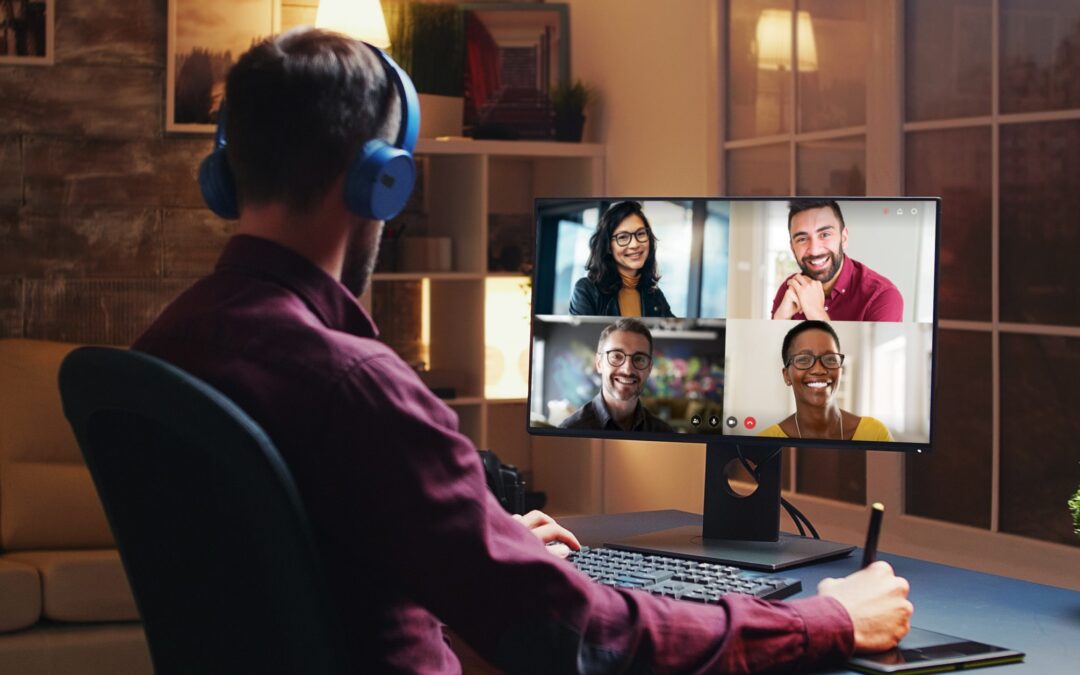The COVID-19 outbreak has caused dozens of tech conferences and conventions to be cancelled over the last few weeks. Now companies are closing down their offices and asking employees to work from home. If you have been affected, chances are most of your in-person meetings have been changed to conference calls.
Working from home might sound great at first, but having to do all your own IT work can be a hassle. After all, the last thing you want is to have a technical issue right when it’s time to dial in. There’s no one to help troubleshoot your connection and it can really get in the way of a productive afternoon.
Make sure everything is right before the call begins. Here’s how to prepare for video conference calls from home, or wherever you might be working from.
Be Aware of Your Surroundings
If you need to appear on camera during your call, make sure you know what’s going on around you. Close that window if you’re on a noisy street and flip on a light. PCMag’s lead camera analyst Jim Fisher stresses that “Soft fill on your face is all that matters.” Using a desk lamp with a shade should work, as long as you can avoid harsh, direct light. “If you’ve got big windows, face the windows so they light you up; otherwise the camera is going to struggle with exposure.”
Get Creative With How You Connect
Most companies have a favorite service they use, like Teams, Google Hangouts, or Zoom. If you’re working on a personal computer, all you have to do is download the appropriate desktop app or click a link and log into your account.
However, if you have to think fast and find the right video call service that fits your needs, remember that most mobile messaging apps have video capabilities. Apps like Facebook Messenger, Signal, Android Messages, and Google Hangouts, among others, allow for limited video calling. Many of these services also have web and desktops apps. Face Time also allows group chats and supports receiving phone calls on your computer.
Clear Out the Bandwidth Hogs
One of the downsides of video chats are the pixelated screens and choppy audio that comes with lackluster bandwidth. If you’re expecting a video call or three, make sure that smart devices in your home aren’t hogging the connection.
For instance, streaming video games or Disney+, the robot vacuum mapping your home, or hefty software programs running on your PC, could disrupt your video call at an inopportune time.
To start, check your internet speed to know what you’re working with and whether you’re getting what you pay for.
Log In Early
Don’t wait for the meeting to start to find out your connection is bad or your software doesn’t work properly; test it before the conference starts. You can do this in Zoom by using the program’s test feature. WebEx also has a Personal Room that can be used for testing.
In Skype, click your profile picture and select Settings>Audio & Video Settings, and there should be a camera preview under the Video section. You can also look for Sound Test Service in your Skype contacts to test audio quality.
Go With a Wired Connection
If Wi-Fi is still giving you trouble, fish out that dusty Ethernet cable for a direct connection, which should hopefully cut down on any potential speed issues or sudden dropouts while video conferencing. If your laptop doesn’t have an Ethernet port, pick up a cheap USB to Ethernet or Thunderbolt to Gigabit Ethernet adapter.
Avoid Feedback
Don’t rely on your computer’s iffy built-in mircophone and speakers. Find yourself a nice Bluetooth headset or even gaming headphones to use when you’re on a call. They connect easily to your computer while also offering comfortable over-ear fits with a strong microphone.
Don’t Forget a Charger
Long conference calls can drain a laptop battery pretty quick. And you don’t want to have to step away from the meeting to find your charger as battery warnings blink on your screen. Make sure your laptop is plugged in and charging. There are also some portable chargers powerful enough to recharge your laptop in a pinch.
Have a Backup Plan
No matter what program you use, have a backup plan in case something goes awry, whether that’s switching to an audio-only call or throwing in the towel and realizing you’re in a meeting that could’ve been an email.
Customized Computer Services, Inc. is a Managed IT Service Provider, we have been serving the Dallas-Fort Worth Area for 30 years. Contact us to find out how we can help your business stay one step ahead with your IT.

